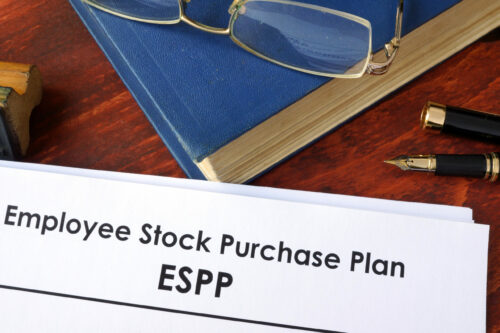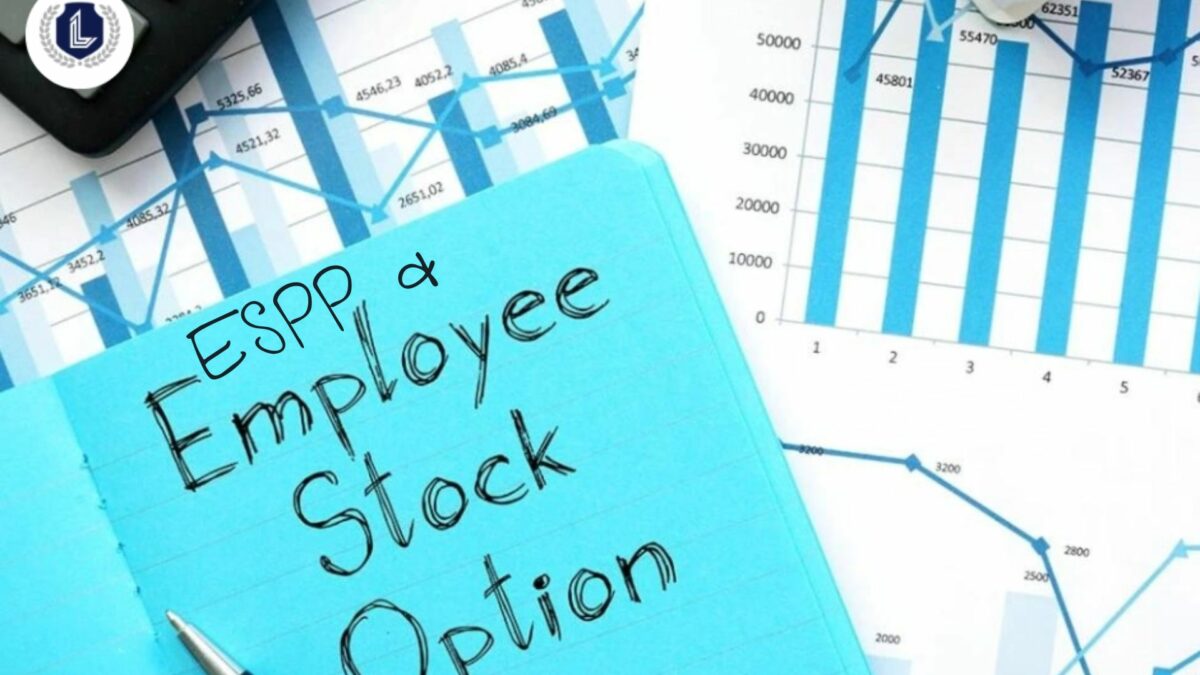“Δός μοι πᾷ �?τῶ καὶ τὰν γᾶν κινή�?ω “
(translated)
“Give me a lever long enough and a fulcrum on which to place it, and I shall move the world.”
–Archimedes
In the last article, “Investments Where You Can Influence the Outcome” we talked about investments where, rather than doing your research beforehand, investing your money, and hoping for the best, you could potentially positively (or negatively) influence the outcome of your investment after you’d already made your investment.
One commenter, who runs the blog Done by Forty, suggested that one possible investment where you could influence the outcome is via an employee stock purchase plan (ESPP).
After all, if you work there, and you are purchasing company stock, aren’t you a little more motivated to work harder, unless you just realize that you’re working with a bunch of mega-brains and you’re the Atlas of the bell curve, holding it up for everyone else who works there. In that case, you might be investing in your co-workers rather than your own motivation! But, I digress…
Let’s look a little deeper at ESPPs and their cousin the employee stock option and see just how much your motivation impacts the stock price of your employer.
But, first, we need to answer the basic question: what is an ESPP?
Can You See Into the Future With ESPPs?

Did you get that? Come on…you enjoyed that bad play on words, didn’t you?
In general, an employer stock purchase program works like this:
- There is a defined time period – sometimes a month, sometimes six months – in which you can contribute some percentage of your salary, usually up to 10%, to purchasing your employer’s stock.
- The employer takes your money and purchases the stock.
- It usually takes the lower of the price at the beginning of the purchase period or the end of the purchase period and then sells the stock to you at that price along with a discount.
- You can sell the stock after a certain holding period. Some employers have no holding period and others have a defined period that you must hold the stock. After that, you can sell the stock for a short term capital gain/loss or hold it for longer to qualify for a long-term capital gain/loss.
The magic is in the discount. When I was at Capital One, we were able to purchase monthly, and we got a 15% discount. There was no holding period (that I recall), so I’d get on the phone once a month and sell my stock the day that I got it.
Let’s say, for the sake of a simple example, that I made $1,000 a month and I set 10% into the ESPP. If COF stock started at $10 at the beginning of the month and ended the month at $9, I’d, at the end of the month, be purchasing at $7.65 and immediately selling at $9. I’d have 13.07 shares and sell them for $9, giving me $117.65. That’s a 17.65% return on my $100, not 15% like you think it is.
The only place you can get a better return on your cash is in a 401k match, assuming the matching terms are better!
Not only am I getting 17.65% on my money, as Wealthfront’s Adam Nash points out in his blog, the annualized return is much higher because of the shorter period that you’re investing for. Of course, an annualized return assumes that you have the equivalent opportunity to continue to invest in similarly returning assets, but, hey, math!
Employee stock options are a variant of the same idea, except that a) you usually can’t buy them, and b) you don’t get a discount on the purchase price.
You’re usually given stock options as a performance bonus. They have a certain period that you have to wait until you can exercise them, called a vesting period. More specifically, you’re given call options, which means that you have the right, but not the obligation, to purchase the underlying stock at a given price at some point in the future. That price is called the strike price, and it’s usually the price of the stock at the day that you’re given the options.
Then, at some point in the future, you’re able to exercise the option. If the price has risen, then you purchase the stock at the original price. If the price has dropped, your option is worthless, but, hey, you didn’t pay anything for it.
In most cases of employee stock options, you can do what is called a cashless transaction, which is a simultaneous purchase and sale of the underlying stock.
We received stock options at Capital One as performance bonuses. So, let’s give another example.
The stock options I received had 1-year, 2-year, and 3-year vesting periods. 1/3 of the options vested each year.
So, let’s say that I earned 999 options at the end of the year. The stock price of COF was $10 at the time I earned the options. The strike price of my options would be set at $10.
At the end of year 1, the stock has done well, and it’s now worth $15. I have 333 options that I could exercise. I called up the broker who held the options (e*Trade if I recall correctly from my experience) and told them that I wanted to exercise the options.
At that point, I could have paid $3,330 (333 options * my $10 strike price) and owned 333 shares. The alternative, which was what I always did, was to do a cashless exercise, meaning that the broker lent me $3,330 to buy the shares at $10 and immediately sold them for $15. I’d pay back that loan and they put $1,665 in my account.
At the end of year 2, let’s say that the stock has tanked. It’s worth $7.50. Boo hoo! My vesting period has expired, but I wasn’t required to purchase the stock, so no loss. If the options have a later expiration date, you could hold them and hope that the stock price rises above the strike price. Let’s say that I had an expiration date of the vesting date, meaning that I couldn’t hold onto them. No gain.
At the end of year 3, let’s say that it’s up to $12.50. I could do another cashless transaction, this time earning me $832.50.
The return on my cash investment? Infinity! I put no cash in and got cash back. Of course, I had to work and do well enough to earn the stock options, and there is a value on my time, my cash out of pocket was $0.
So, generally speaking, ESPPs and stock options are good things! The downside is limited (depending on the holding period for an ESPP) to none, although I certainly have dealt with clients who face the challenge of when to sell currently profitable stock options and ESPPs, and because of leverage, you have to invest less (or no) money than you would otherwise in your investments.
But, we have yet to answer the question that our commenter posed in the first place:
Can you influence the outcome of your ESPP and employee stock option investments?

You, because you are a Dear Reader, are diligent and hard-working, and you give 99% at work. Having an ESPP or stock options might be the incentive required to cause you to give 100% or to make the 99% that you currently give worth even more!
But what about those other people who work with you? Are they motivated to work harder? Do they yell “GO TEAM” as they do their morning commute?
This was the question that the National Bureau of Economic Research asked (well, not the “GO TEAM” question) – how does an employee stock purchase program or employee stock options affect the performance of the employees who participate?
Specifically, they wanted to know whether these programs affected:
- Turnover (the number of employees who left the employer in a given time) – having to constant hire and train new employees is a drain on a company, and employers want to keep the people who they want
- Absenteeism – did employees show up to work just as often or more often than those who weren’t in these programs?
- Loyalty – did the employees feel a stronger tie to their employer?
- Worker effort – did they find that extra oomph to give to their jobs?
- Frequency of worker suggestions to improve productivity – usually, the people on the line know best what is screwed up with the line, so if they’re motivated to fix the problems, productivity should improve.
In theory, ESPPs, stock options, profit sharing, and other “shared capitalism” programs are meant to be the opposite of Communism. In Communism, if you worked in the fields, it didn’t matter how many potatoes you harvested. You still got your tenement apartment, your bread lines, and your Dear Leader pin to wear. But, in a shared capitalism environment, workers are motivated to police their own because they want everyone pitching in so that they get more money. It’s an oversimplified description, but you get the idea. That’s why the NBER researchers wanted to measure those specific traits – they were indicators (but not guarantors) of overall improved company performance.
They found that all of the factors researched outside of absenteeism were positively influenced by the presence of a “shared capitalism” policy, and absenteeism was only marginally eliminated from the statistical analysis (meaning that, when combined with other factors like HR policies that are usually present in these types of companies, it was positively affected, but they couldn’t say with statistical confidence that it was because of the “shared capitalism” policies).
Furthermore, employees who took part in a “shared capitalism” company viewed their co-workers as harder-working than those who don’t get to take part in such a program.
So, we know that, based on the NBER research, you’ll work in a place where people are perceived to work harder and they stay with their employers longer – better to work in a motivated place than one which is not motivated!
But do stock prices improve as a result of ESPPs and the like?
Here’s where we tread into murky water. Let me make the standard disclaimer:
THIS IS NOT INVESTMENT ADVICE. YOUR RESULTS MAY VARY. SEEK PROFESSIONAL ADVICE FOR HOW TO INVEST YOUR MONEY.
I found a series of studies referenced by the National Center for Employee Ownership (guess what their agenda is) that state that closely held companies do have better stock performance as a result of “shared capitalism” policies, but
Studies on ESOPs and corporate performance in public companies come to more mixed conclusions (sic).
The key to strong performance in closely held (e.g. not publicly traded) companies is both employee ownership and participative management.
Unfortunately, they never define participative management.
So, how do you know if you have participative management and, therefore, would seem to have a better chance at improved stock performance?
I have no idea. Sadly.
Even if I did, the stock market is a fickle beast. While “shared capitalism” policies might improve the chances of stock performance, there’s no guarantee that your company will show improved performance.
Therefore, the only conclusion that I can draw about the long-term effects of a “shared capitalism” environment is that it’s probably a better place to work. How that translates into your personal bottom line is a much hazier crystal ball gazing exercise.
Still, it is indubitably clear that if your employer offers a generous ESPP policy that allows you to immediately sell stock that you could purchase at a discount, you should absolutely, definitely, undeniably take advantage of that opportunity.
Where else can you get those guaranteed returns over that short of a period of time? I can’t think of any investment opportunity that has the same return.
Does your employer offer a “shared capitalism” program? What are the terms? Do you think that it’s a better place to work? Finally, is it Archimedes’ lever or Archimedes’s lever?
Author Profile
- John Davis is a nationally recognized expert on credit reporting, credit scoring, and identity theft. He has written four books about his expertise in the field and has been featured extensively in numerous media outlets such as The Wall Street Journal, The Washington Post, CNN, CBS News, CNBC, Fox Business, and many more. With over 20 years of experience helping consumers understand their credit and identity protection rights, John is passionate about empowering people to take control of their finances. He works with financial institutions to develop consumer-friendly policies that promote financial literacy and responsible borrowing habits.
Latest entries
 Low Income GrantsSeptember 25, 2023How to Get a Free Government Phone: A Step-by-Step Guide
Low Income GrantsSeptember 25, 2023How to Get a Free Government Phone: A Step-by-Step Guide Low Income GrantsSeptember 25, 2023Dental Charities That Help With Dental Costs
Low Income GrantsSeptember 25, 2023Dental Charities That Help With Dental Costs Low Income GrantsSeptember 25, 2023Low-Cost Hearing Aids for Seniors: A Comprehensive Guide
Low Income GrantsSeptember 25, 2023Low-Cost Hearing Aids for Seniors: A Comprehensive Guide Low Income GrantsSeptember 25, 2023Second Chance Apartments that Accept Evictions: A Comprehensive Guide
Low Income GrantsSeptember 25, 2023Second Chance Apartments that Accept Evictions: A Comprehensive Guide

